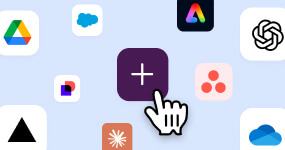The Slack Blog
Agentforce: Now Powered by Slack Data and Slack Actions
Elevate your Agentforce with even more skills.
Slack for customer support: Expert Tips from Slack Community NYC
Hear from Slack experts on how you can get the most out of Slack for customer support.
Secure your Slack data with best practices, enhanced threat detection, and alerting controls in Slack
Enterprise-grade security is woven into every aspect of how users collaborate and get work done in Slack.
Three Ways Slack Helps Enterprise Finance Teams Be More Productive
Salesforce finance teams use Slack to speed up reporting, for approvals, and to work with external partners.
6 innovative ways to transform work with Slack’s partner ecosystem
At Dreamforce, Slack partners and customers offered their ideas for building, launching and maintaining a digital HQ that transforms organizations
Say hello to the updated Slack Community Forum companion app
Bring all the magic of the community right into Slack
The future of remote working: What you need to know
Remote work was already popular, but the pandemic fueled an explosion in growth. Now that it’s here to stay, what does that mean for you?
Your digital HQ just got better with Slack canvas
Introducing a surface that boosts team productivity by turbocharging Slack and Salesforce Customer 360’s value
How to implement a digital transformation
Integrating new technology into your business can be difficult, but the rewards are worth it
Help your company shift to a digital-first culture
Adapt to the evolving needs of your people, customers and market by building a strong foundation that empowers your organization
Slack and Salesforce consulting partners launch industry-specific solutions
First wave of Slack Partner Industry Solutions will support customers in Financial Services, Manufacturing, Communications, Retail, Media and Tech
Five pillars of a digital-first mindset
Create a leaner, more agile version of your business that’s ready to stay competitive in the modern business landscape





